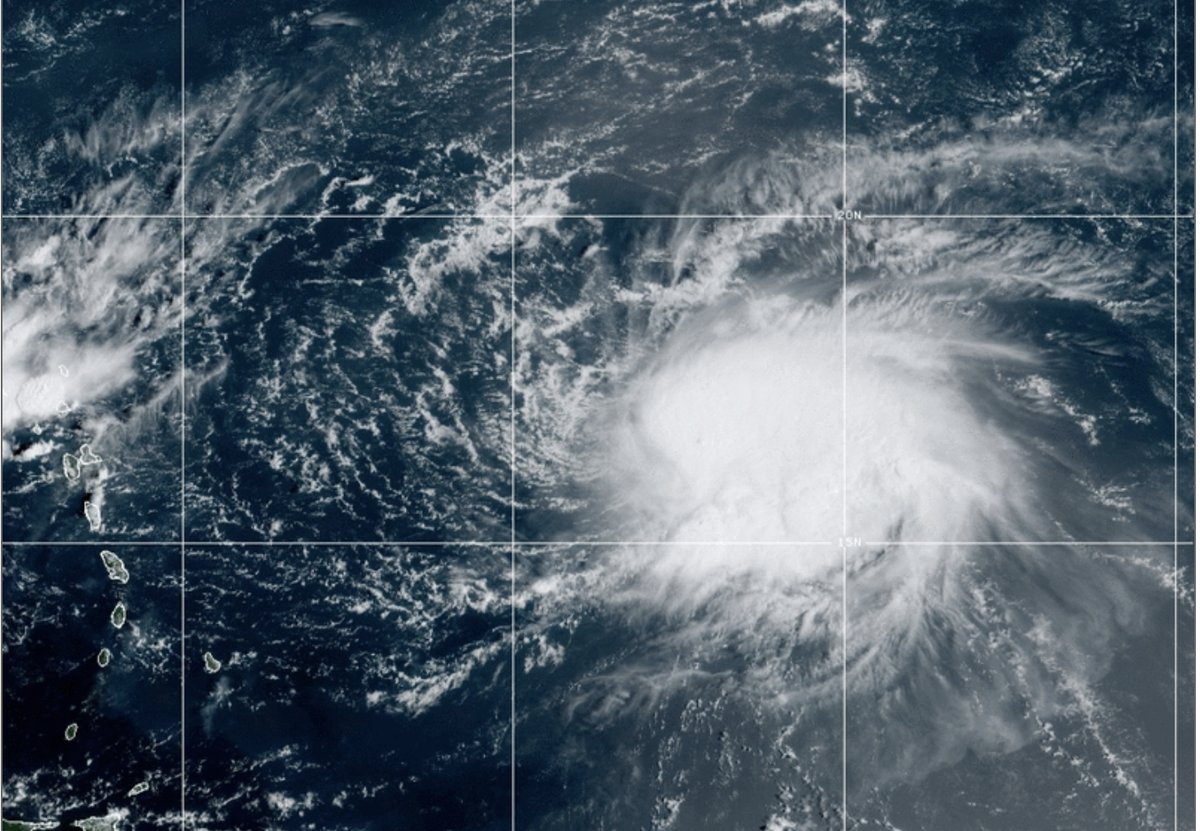Tropical Storm Fiona takes aim at Puerto Rico and set to hit this weekend

Tropical Storm Fiona has officially formed in the Atlantic Ocean and is on a collision course with the eastern Caribbean.
The cyclone is set to hit St Kitts and Nevis, Antigua and Barbuda, and other nearby islands by Friday night. It is then forecast to keep moving eastward, bringing tropical storm-force winds to Puerto Rico on Saturday.
Up to eight inches of rain in parts of the island, combined with winds up to 50 miles per hour (80 kilometres per hour) could bring challenges for Puerto Rico — which faced serious devastation from Hurricane Maria almost five years ago exactly.
A tropical storm watch has been issued for St Kitts, Nevis, Antigua, Barbuda, Montserrat, Anguilla, St Maarten, Saba and St Eustatius. The National Weather Service (NWS) says further tropical storm watches will likely be issued later on Thursday for parts of Puerto Rico and the Virgin Islands.
Fiona is not currently forecast to become a hurricane in the next few days, NWS says.
In addition to high winds, between three and six inches of rain are likely to fall in the storm’s path, including in Puerto Rico and possibly the Dominican Republic as the storm heads further east.
“These rains may produce flash and urban flooding, along with isolated mudslides in areas of higher terrain,” NWS warns.
The storm is just the sixth named storm of the Atlantic hurricane season, which has been off to a slow year. So far, just two hurricanes have formed — neither of which was stronger than Category 2 — even as the hurricane season enters its usual peak in mid-September.
8 AM AST SEP 14: Advisory | Advertencia #4A: Tropical Storm Fiona moving westward toward the northern Leeward Islands. | Tormenta Tropical Fiona se mueve hacia el oeste rumbo a las Islas de Sotavento del norte. #PRwx #USVIwx pic.twitter.com/kzB7cU2ylZ
— NWS San Juan (@NWSSanJuan) September 15, 2022
2022 was also the first year since 1997 that no named storms formed in the month of August.
The US National Oceanic and Atmospheric Administration (NOAA) had forecast an “above-normal” hurricane season this year, with up to 21 named storms, including up to 10 hurricanes. The Atlantic hurricane season lasts from June through November.
In 2017, Hurricane Maria had become a Category 4 hurricane by the time it hit Puerto Rico, leaving unimaginable damage in its wake. Most of the island went without power for weeks afterwards, and much of the islands was similarly without running water for weeks.
Despite the relatively quiet year so far, hurricanes are expected to become much stronger on average as the climate crisis grows. Warmer air and water can create storms with much more rain and faster winds — making them vastly more dangerous as they make landfall.

